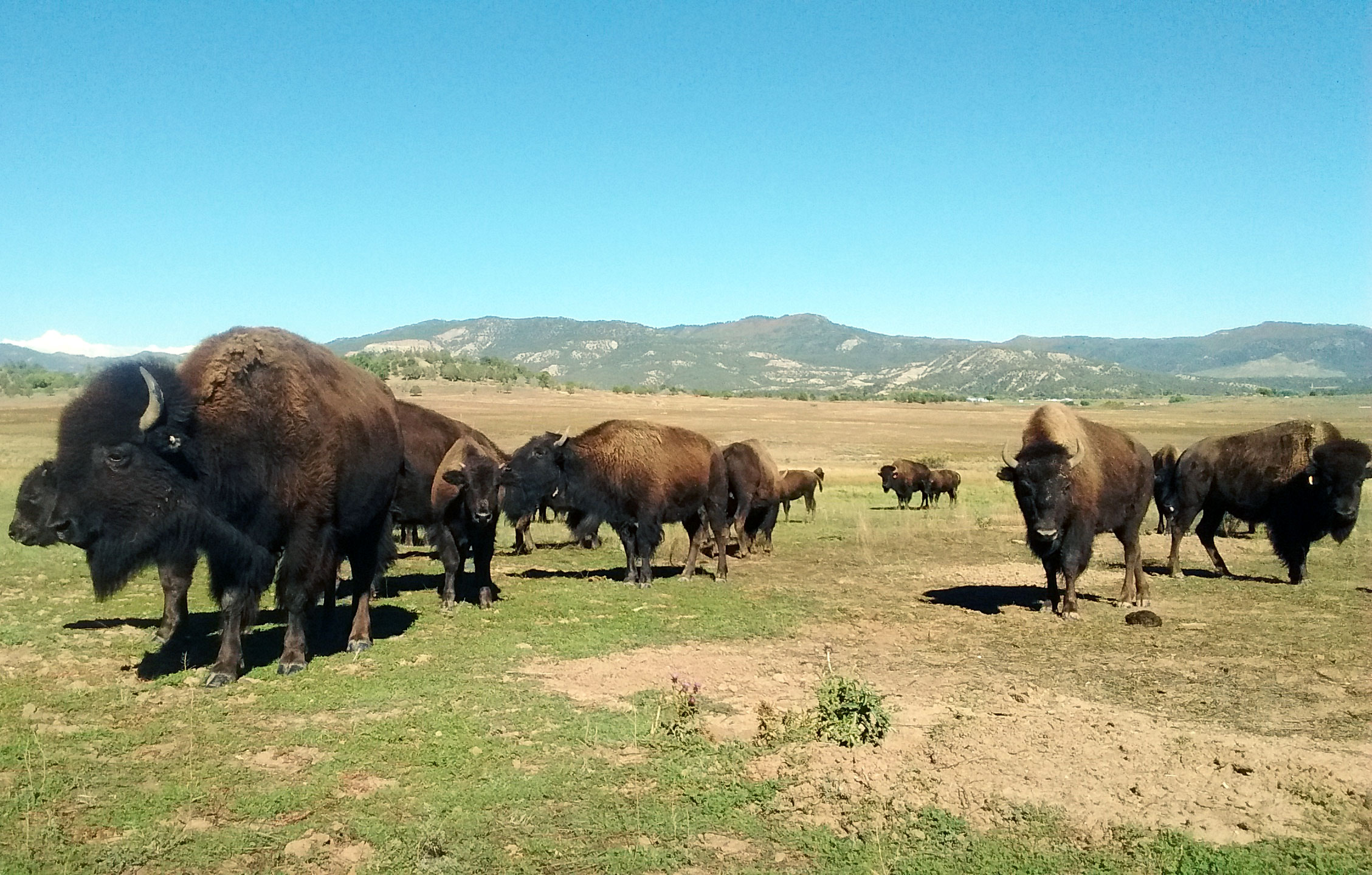Bison meat is becoming more and more popular around the country and the same is holding true here on the Southern Ute Reservation. According to the National Bison Association, sales of bison have grown 22 percent over the past five years. Luckily for Southern Ute tribal members, bison meat is made available to the membership free of charge.
Since the program began distributing meat in 2010 it has provided bison meat to over 400 different tribal members, Steve Whiteman, head of the Division of Wildlife said. The program has been providing a maximum of 10lbs of bison meat per month, per tribal member household, on a first come first serve basis. But now as demand for the naturally raised protein increases the division is having to decrease the 10lb allocation down to 5lbs, Whiteman said.
“Our long-term goal right now is to grow the herd so we can supply the growing demand within the membership for bison meat,” Whiteman said.
As of now, Wildlife is completely out of meat until after the next harvest in late November. Tribal members can expect meat to be ready for pickup in December.
The herd size varies throughout the year, with new calves born into the herd each spring and older animals being harvested at various times all year-long. Right now the herd consists of 52 bison; there are 13 cows that are able to reproduce; one herd bull; nine baby calves that were born this season; and the rest are younger female calves that are not quite ready to breed yet, Jesse Lasater Bison herd manager said.
The Bison program has been harvesting between 12-15 animals a year, but in order to keep up with demand Lasater thinks that the harvest size would need to increase to around 20 bison a year.
However, to keep with the long-term vision of increasing the herd the Division of Wildlife will have to cut back on harvest numbers to allow the herd to grow.
According to Lasater, a year-round herd size of 65-70 would be ideal. Which would double the number of bison that were here when Lasater started his job with the tribe last November.
Increasing herd size will come with challenges, Lasater said. One of the big challenges will be increasing the forage for the animals.
“The most limiting factor right now is getting greater production with the pastures so they can sustain and provide the animals with enough healthy feed to thrive,” Lasater said. Whiteman added, “And we need to be careful to avoid a situation like we had in 2002, when the herd of approximately 140 animals was too much for us to sustain with our drought-challenged pastures, and we had to sell-off about 100 bison.”
The Division of Wildlife is excited about the growing number of tribal members utilizing the program and hopes the membership continues to do so, Whiteman said. Now, Wildlife is asking for patience and understanding of the limitations as they begin to grow the herd to meet demand.
Tribal members interested in receiving bison meat must go to the Division of Wildlife Office in the Annex Building – Room 125 – to sign for and pick up meat. Whiteman recommends calling the division at 970-563-0130 prior to visiting the office in order to confirm the availability of meat.
Other bison products
Also as reminder to the membership in addition to meat distribution, the Division of Wildlife and the Culture Department work in collaboration to provide the tribal membership with additional bison products including: robes, leather, skulls and other parts for cultural uses.
Members that are interested in acquiring such parts need to fill out an application with the Culture Department. The Culture Department then evaluates the merit of the request. Upon approval Culture turns the request over to Wildlife to fulfill the request.
It is important to keep in mind that the turn around time for the requested part varies on each request.
Also, Wildlife does not provide shoulder mounts to the membership. Due to the cost and the short supply shoulder mounts are for sole use of the tribal government.
Get your bison cookbook
Another successful collaboration between Culture and Wildlife was the making of the “Southern Ute Buffalo & Other Wild Game Cookbook”. The tribe received a grant from the InterTribal Buffalo Council for the cookbook and tribal elder/bison educator Marjorie Borst was in charge of writing and gathering recipes from tribal members for the book.
While with Culture, Borst worked tirelessly on the cookbook, hosting bison tastings and classes where she talked about the nutritional value of bison meat and how to cook the different cuts.
Upon completion of the cookbook, Tribal Council honored Borst for her contribution.
The cookbook is available to all tribal members for free and can be picked up in the Wildlife office in the Annex building.

